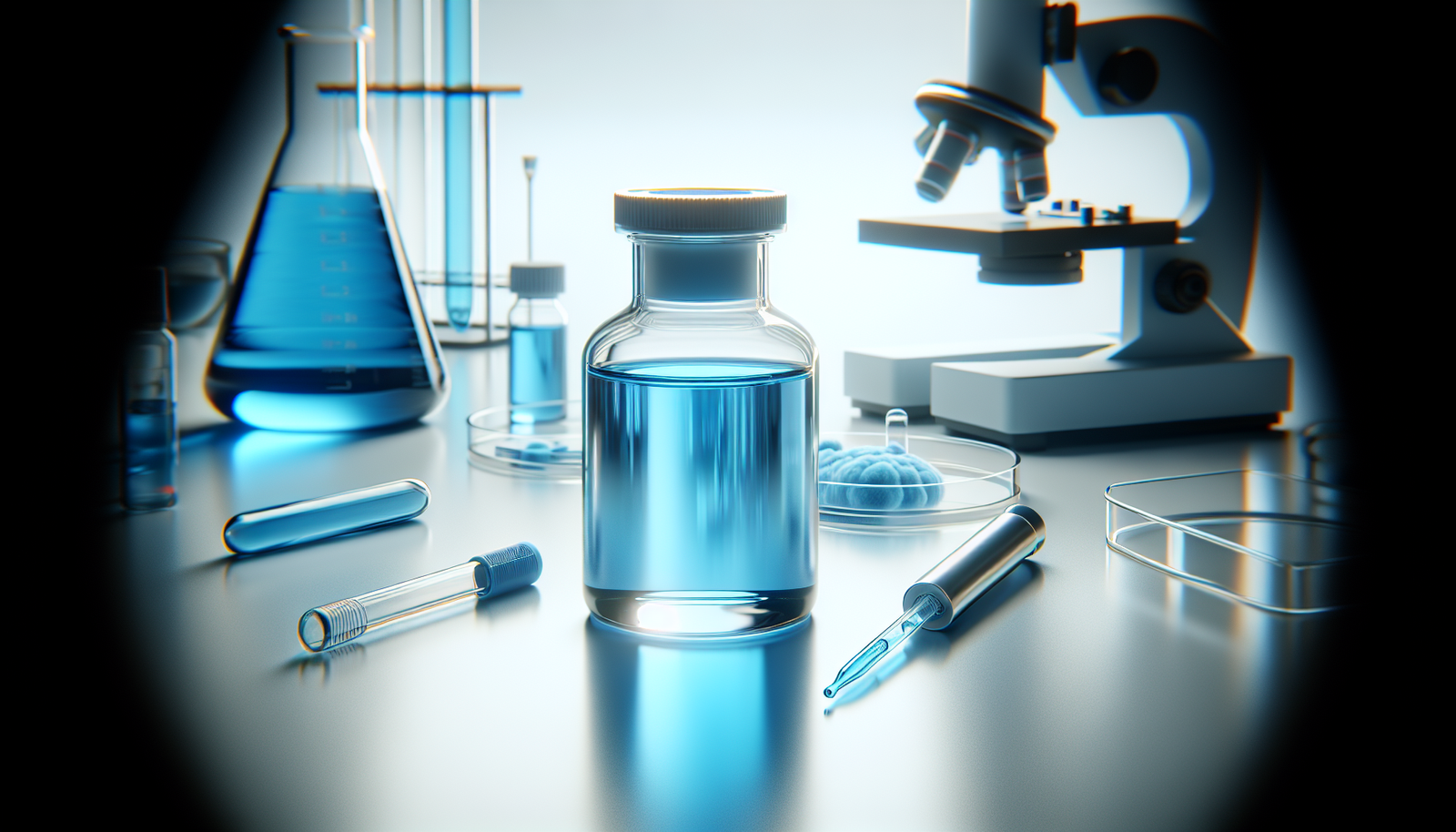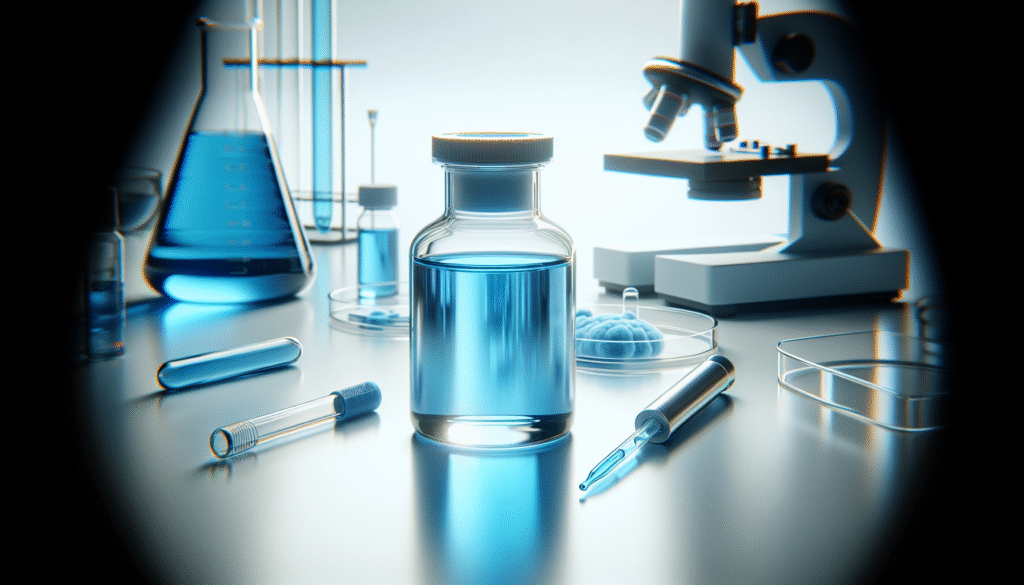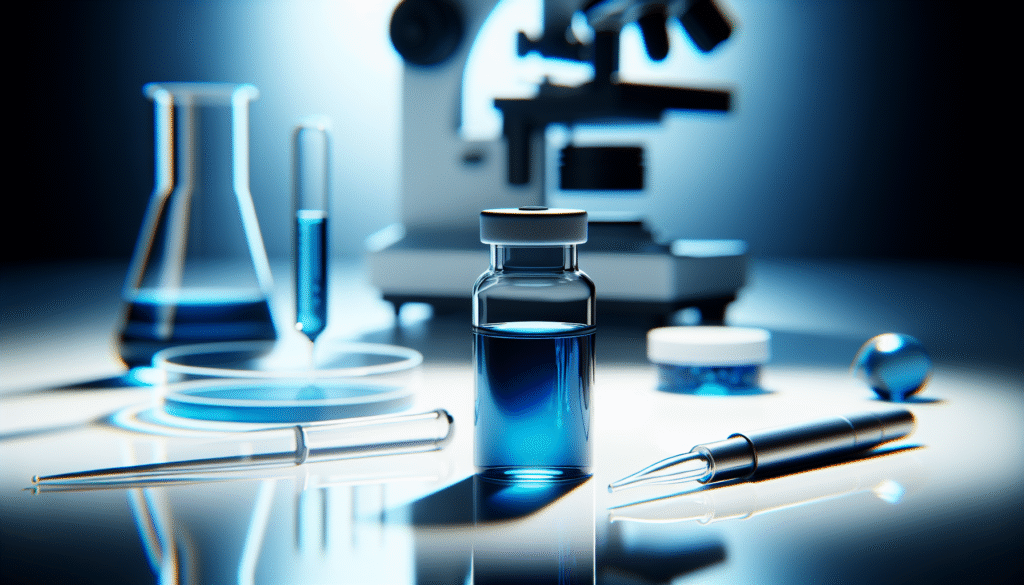
Have you ever considered the potential of methylene blue beyond its conventional applications? It is a remarkable compound with varied uses in diverse fields, such as biology, medicine, and chemistry. Understanding how to utilize methylene blue under optimal conditions could vastly enhance its effectiveness. This article will assist you in leveraging this compound to its fullest potential, exploring its applications, mechanisms, and important safety measures.

Understanding Methylene Blue
Methylene blue, a synthetic dye, was first synthesized in 1876. Known for its vibrant blue color, it has a fascinating history involving its use as an antiseptic, a treatment for malaria, and even a learning aid in biology to stain cells. Today, it’s also being scrutinized for its potential neuroprotective properties.
Chemical Properties
Methylene blue’s full chemical name is methylthioninium chloride. Its molecular formula is C16H18ClN3S. The compound is soluble in water, making it easy to incorporate into various solutions. Its ability to undergo a reversible redox reaction means it can accept and donate electrons, which is crucial in many biological processes.
Applications
The versatility of methylene blue spans across several fields:
- Medical Use: As a prescription medication, methylene blue is employed to treat conditions such as methemoglobinemia and septic shock.
- Biological Research: It’s commonly used in laboratory settings as a staining agent for biological tissues and cells.
- Psychiatric Research: Some studies suggest that methylene blue may influence cognitive function and has potential benefits in treating certain mood disorders.
Historical Significance
Historically, methylene blue has played significant roles in science and medicine. Originally, it was developed for use as a textile dye. Its medicinal properties became evident when it was used to treat malaria and later for various conditions, making it an important compound in pharmaceutical history.
Optimal Conditions for Methylene Blue
Understanding the optimal conditions for utilizing methylene blue effectively is crucial. This section will cover factors including preparation methods, concentration settings, and environmental conditions that can affect its applications.
Preparation Methods
When preparing a methylene blue solution, the concentration and purity of the dye are paramount. Here’s how to prepare it:
-
Selecting the Right Concentration: For biological applications, a typical working concentration is between 0.01% and 0.1% (w/v). Lower concentrations are often useful for staining purposes, while higher concentrations might be required for therapeutic applications.
-
Dissolving Methylene Blue:
- Measure the desired amount of methylene blue.
- Add distilled water to a clean container.
- Stir gently until completely dissolved.
It’s essential to use distilled or deionized water to avoid any impurities that could alter the effectiveness of the dye.
Safety Measures
Even though methylene blue is widely used, it’s important to handle this compound with care.
- Personal Protective Equipment (PPE): Always wear gloves, goggles, and a lab coat when working with methylene blue to prevent skin and eye irritation.
- Ventilation: Work in a well-ventilated area or fume hood to avoid inhaling any dust or vapors.
- Spill Management: Have a spill kit ready, as methylene blue can stain surfaces.
Environmental Conditions
The efficacy of methylene blue can be influenced by several environmental factors:
- pH Levels: Methylene blue is most stable at a pH range of 6 to 8. Outside of this range, the compound may degrade, reducing its effectiveness.
- Temperature: Store at room temperature, avoiding extreme heat or cold, which could impact stability.
- Light Exposure: Keep away from direct sunlight, as prolonged exposure can lead to photodegradation.
Applications in Medicine
When it comes to medical applications, methylene blue serves as a critical agent in treating certain conditions. This section will explore these applications in depth.
Treatment of Methemoglobinemia
Methemoglobinemia is a blood disorder resulting in the inability of hemoglobin to release oxygen effectively to body tissues.
- Mechanism of Action: Methylene blue acts as an electron donor, reducing methemoglobin back to hemoglobin, allowing for improved oxygen transport.
- Dosage Guidelines: Typically, a dose of 1-2 mg/kg is administered intravenously. A second dose can be given if necessary, but it’s crucial to monitor patients closely.
Role in Sepsis Management
Methylene blue has gained attention for its potential role as an adjunct treatment in sepsis, a life-threatening response to infection.
- Mechanism of Action: It works through vasodilation, improving blood flow and oxygen delivery to tissues.
- Clinical Studies: Some studies highlight its ability to stabilize hemodynamics in septic shock patients, but further research is necessary to establish standard protocols.
Antimicrobial Properties
Methylene blue demonstrates notable antimicrobial properties, making it effective against various bacteria, fungi, and viruses.
- Application Method: It can be used topically as a disinfectant in wound care.
- Limitations: However, its use should be localized to avoid systemic absorption, which can lead to toxicity.
Applications in Biological Research
In biological research, methylene blue serves diverse purposes, primarily focusing on its staining capabilities.
Staining Techniques
Methylene blue is widely used for staining biological tissues and microorganisms, aiding in visualization during microscopy.
- Cell Viability Assays: It is commonly employed in assays to assess cell viability. The uptake of methylene blue indicates the metabolic activity of cells—viable cells will take up the dye and appear blue under a microscope.
Table: Methylene Blue Staining Procedure
| Step | Description |
|---|---|
| 1. Sample Preparation | Fix and hydrate the tissue or cells to be stained. |
| 2. Stain Application | Apply the methylene blue solution for 5-20 minutes. |
| 3. Rinse | Gently rinse with phosphate-buffered saline (PBS). |
| 4. Visualization | Observe under a microscope for analysis. |
Cellular Mechanism Studies
Methylene blue has been instrumental in cellular mechanism studies due to its ability to alter redox states within cells.
- Oxidative Stress Research: It can serve as a tool in examining the role of oxidative stress in cellular damage, given its redox properties.
- Neuroprotective Studies: Research indicates potential protective effects against neurodegenerative conditions by inhibiting mitochondrial dysfunction.
Applications in Neuroscience
Recent studies have shown methylene blue’s potential benefits in neuroscience.
- Cognitive Enhancement: Investigations are examining its ability to improve mitochondrial function and cognitive abilities in aging or neurodegenerative conditions like Alzheimer’s.
- Mood Regulation: Some clinical trials suggest potential antidepressant effects, though this area needs further exploration.

Experimental Considerations
When conducting experiments or utilizing methylene blue in research, several considerations must be accounted for to ensure efficacy and reliability.
Controls and Standards
Implementing appropriate controls is crucial in any research involving methylene blue.
- Negative Controls: Use untreated cells or tissues without methylene blue to determine baseline levels of activity.
- Positive Controls: Employ known compounds that yield expected outcomes to validate results.
Reporting Results
Accurate reporting and documentation of results are critical to maintaining scientific integrity and reproducibility.
- Data Presentation: Use clear and concise tables and figures to present data effectively.
- Statistical Analysis: Apply relevant statistical methods to analyze data and confirm the significance of results.
Limitations and Considerations
Understanding the potential limitations of methylene blue is vital in both medical and research applications.
Toxicity and Side Effects
While methylene blue is generally considered safe, it does present certain risks:
- Allergic Reactions: Some individuals may experience allergic reactions, leading to symptoms ranging from rash to anaphylaxis.
- Drug Interactions: Be wary of potential interactions with other medications, including SSRIs and certain anesthetics.
Ethical Considerations
Research involving methylene blue should adhere to ethical guidelines, particularly when undertaken in clinical or experimental settings.
- Informed Consent: Always obtain informed consent from individuals participating in clinical trials.
- Animal Welfare: Ensure compliance with ethical standards when using animal models to test methylene blue’s efficacy.
Future Directions and Research
The potential applications of methylene blue continue to expand alongside scientific research.
Investigating Novel Uses
Exploring further uses within various fields will likely yield new applications for methylene blue. Current research themes include:
- Cancer Therapy: Investigating its potential in targeting cancer cells through specific mechanisms.
- Gene Therapy: Assessing its role in gene delivery systems due to its cellular uptake properties.
Collaborations Across Disciplines
Interdisciplinary collaborations could lead to innovative applications and a deeper understanding of methylene blue.
- Synergistic Approaches: Partnering with experts in pharmacology, bioengineering, and neuroscience to develop novel therapeutic strategies.
Conclusion
Methylene blue represents a multifaceted compound with a rich history and remarkable potential in various applications. By understanding its properties, optimal conditions for use, and implications within medical and research contexts, you can harness its capabilities effectively. Continuous exploration and research will only enhance its role in science and medicine, opening avenues for future developments that may change the landscape of treatment methodologies and biological understanding.
As you navigate the complexities of utilizing methylene blue, remember that careful consideration of preparation, application, and safety measures will ultimately lead to successful outcomes. Embrace the potential of this vibrant compound, and your knowledge and practice can help chart innovative paths in both research and therapeutic settings.